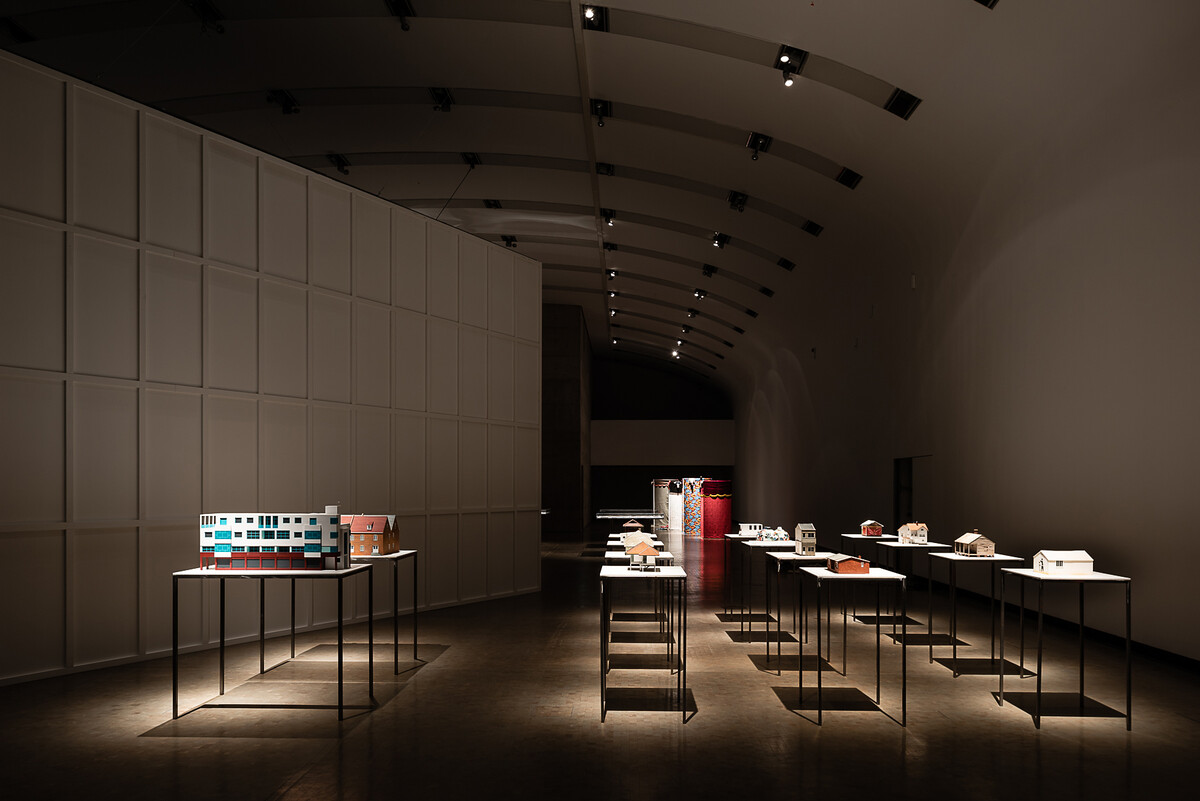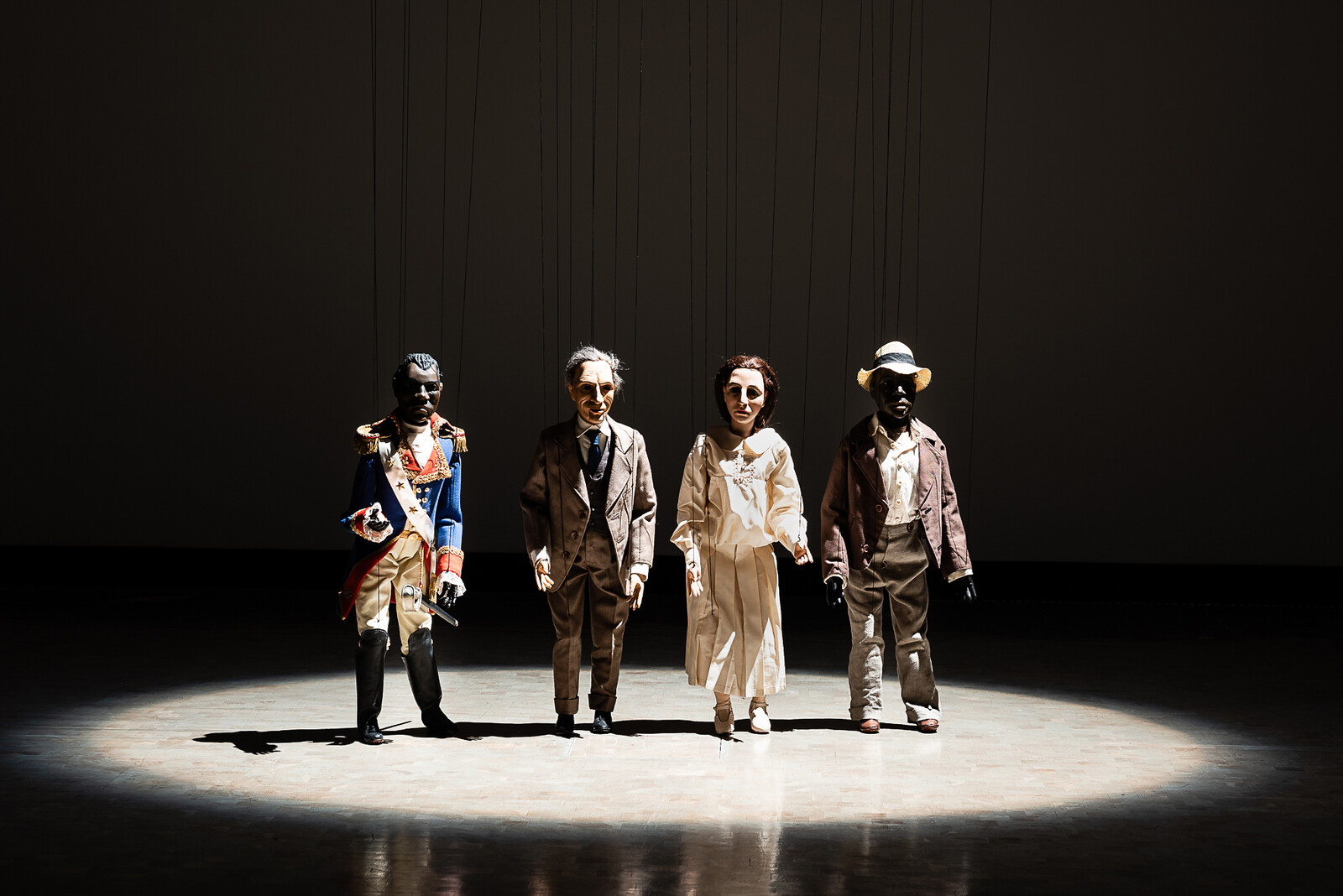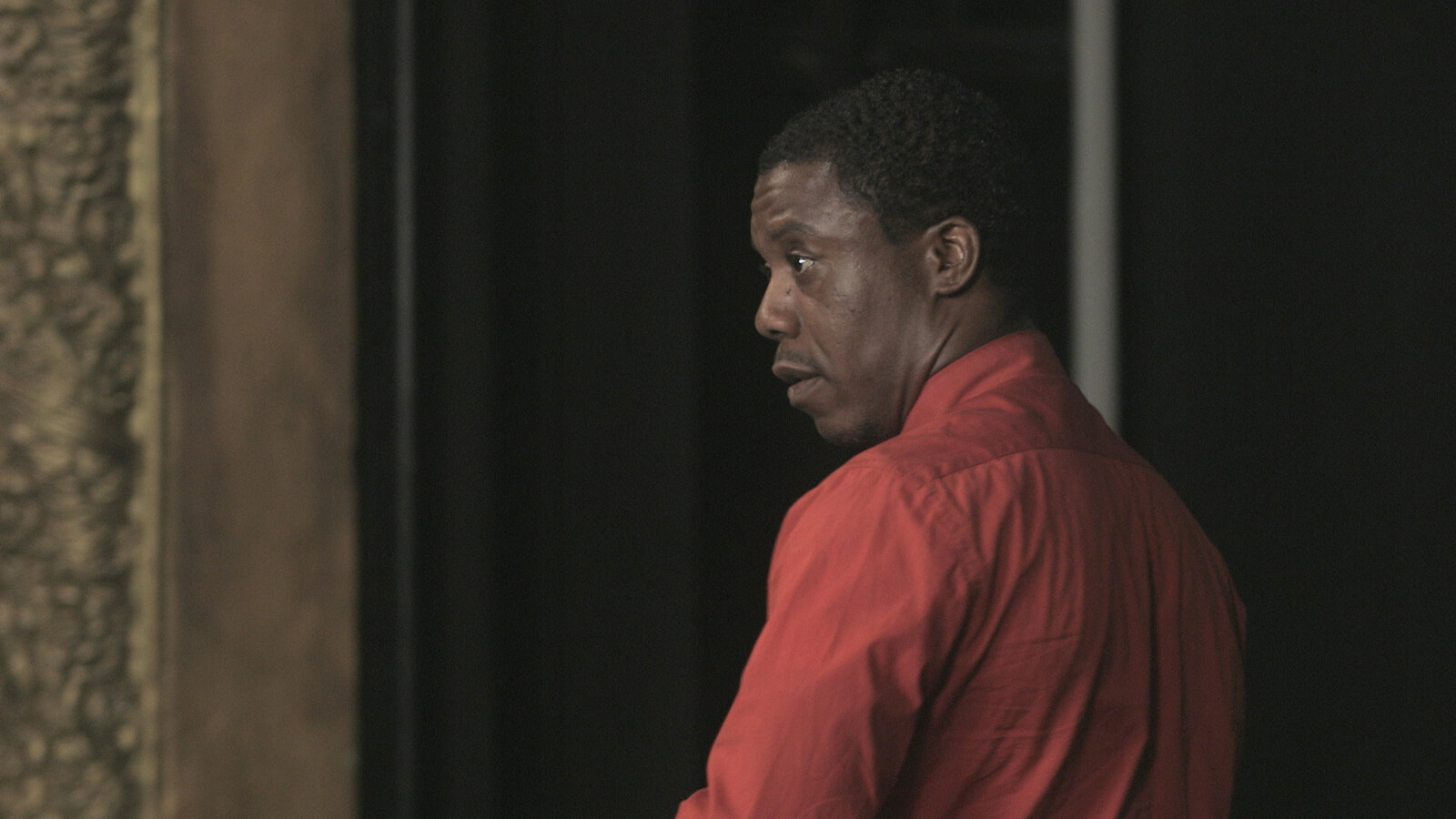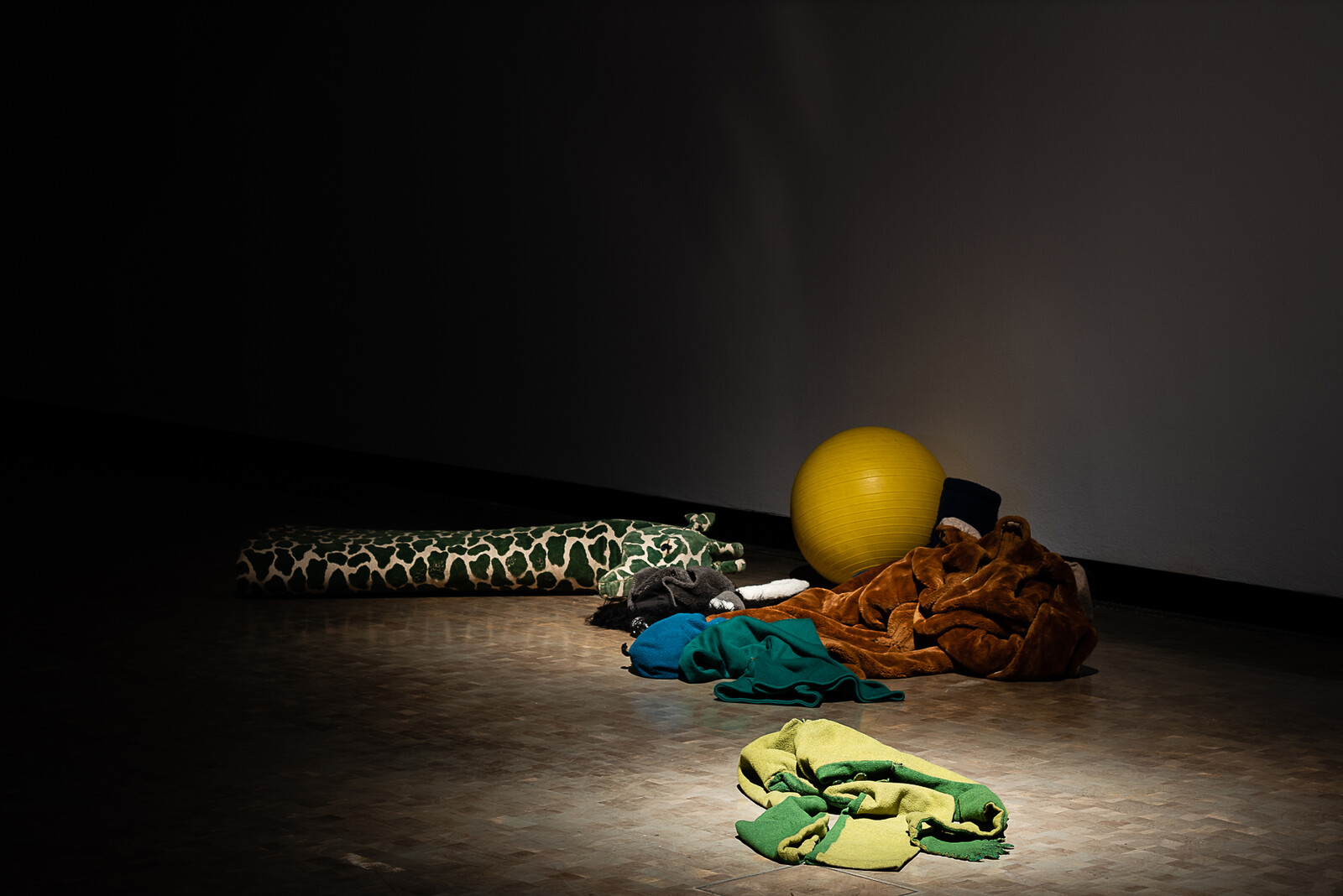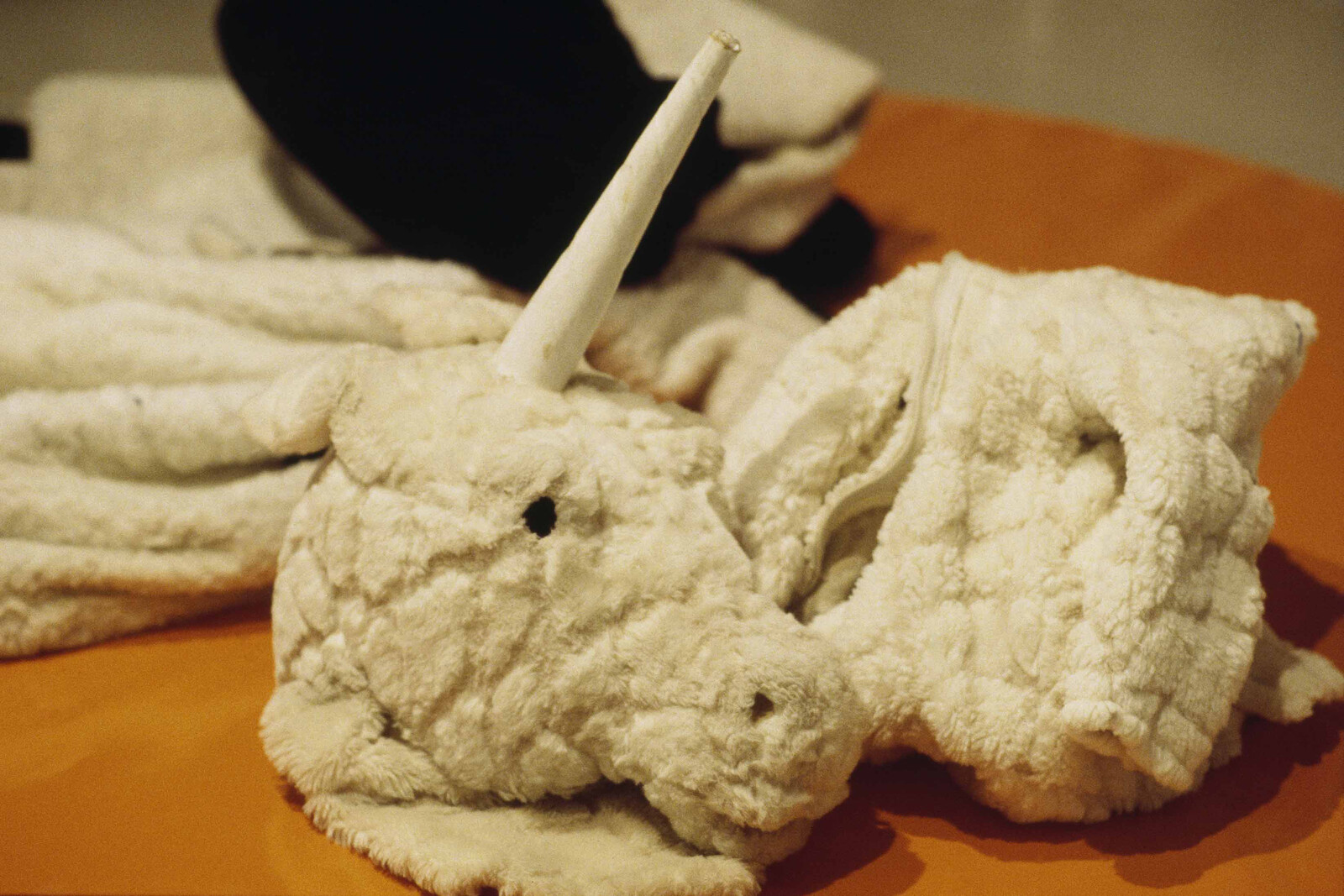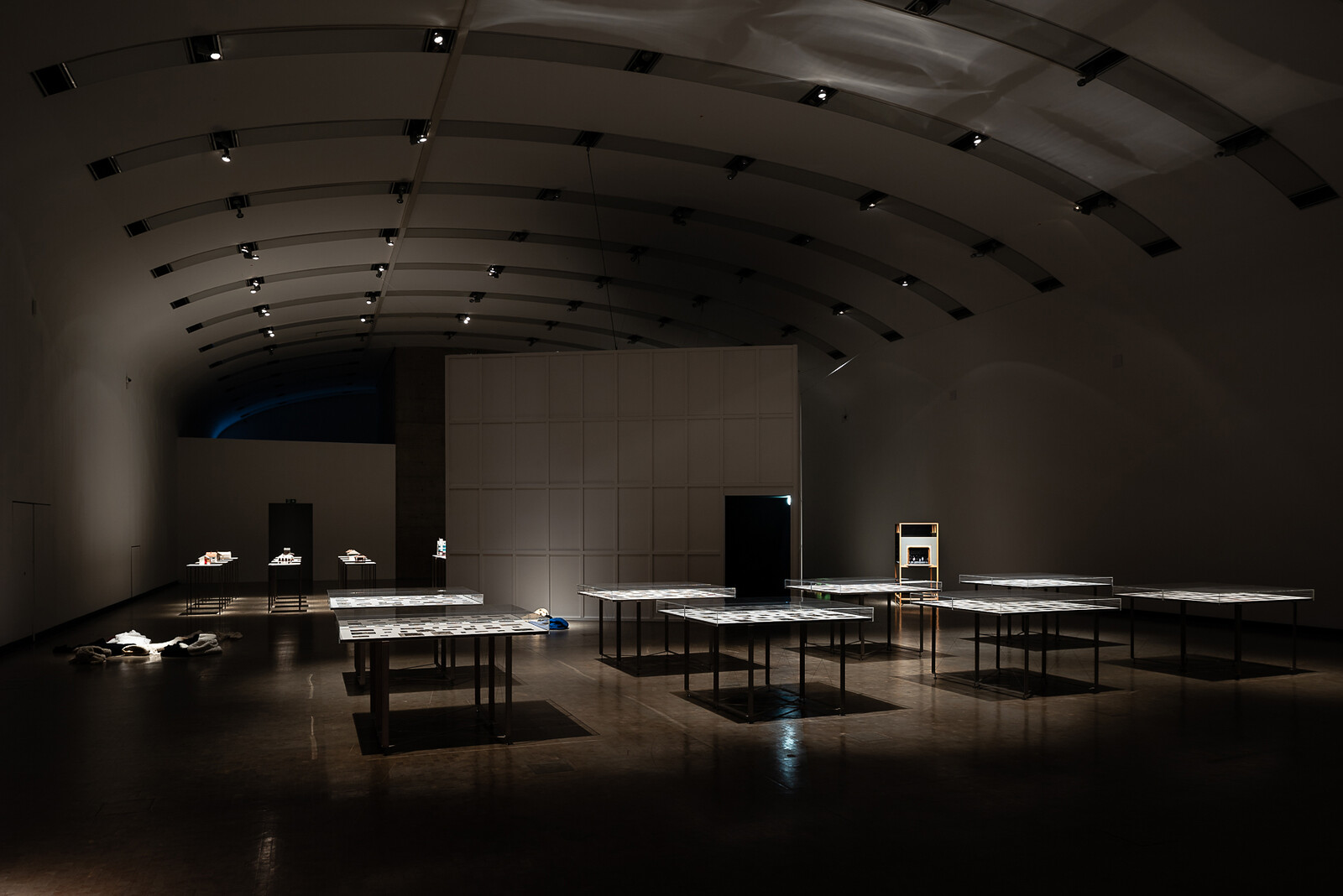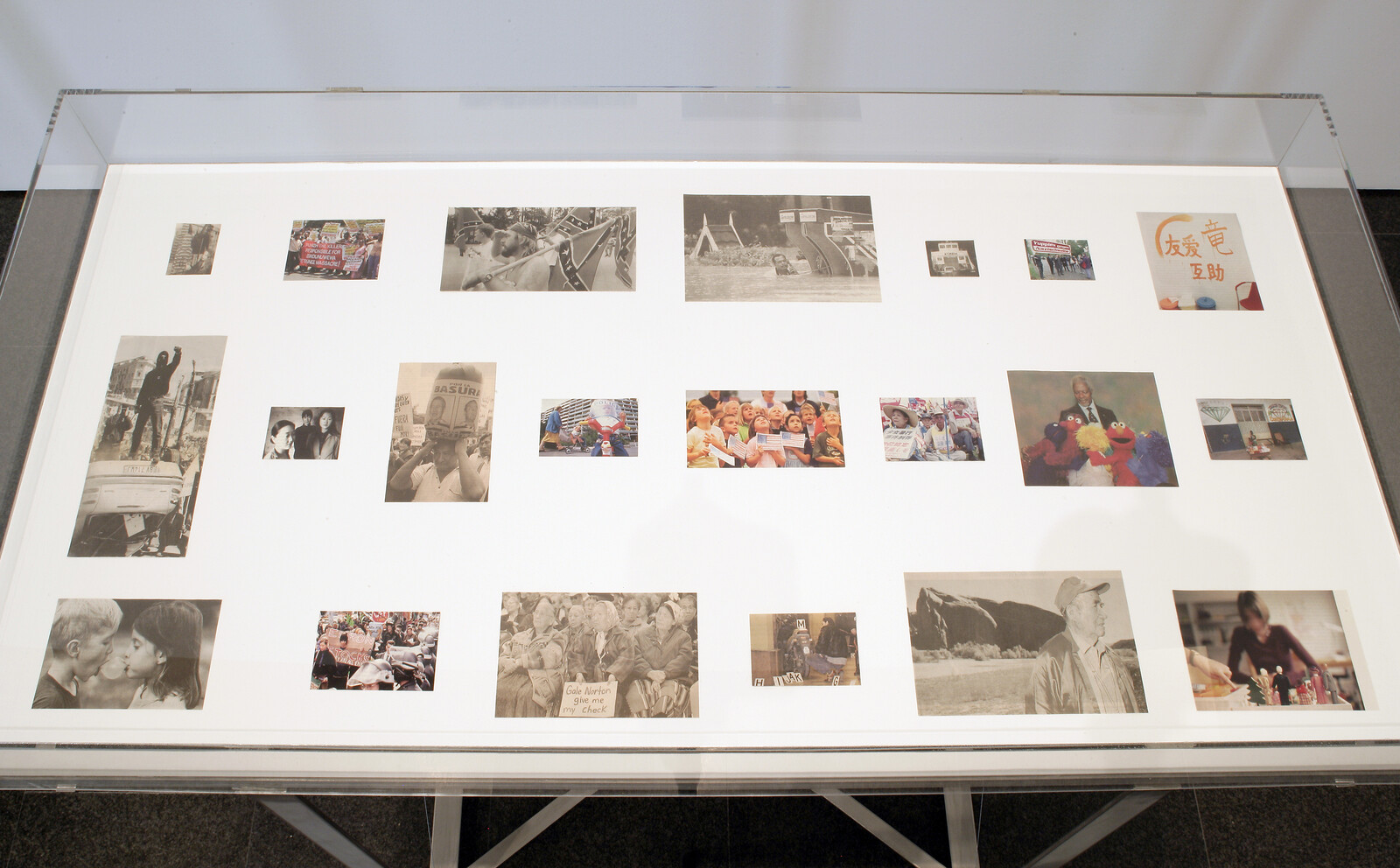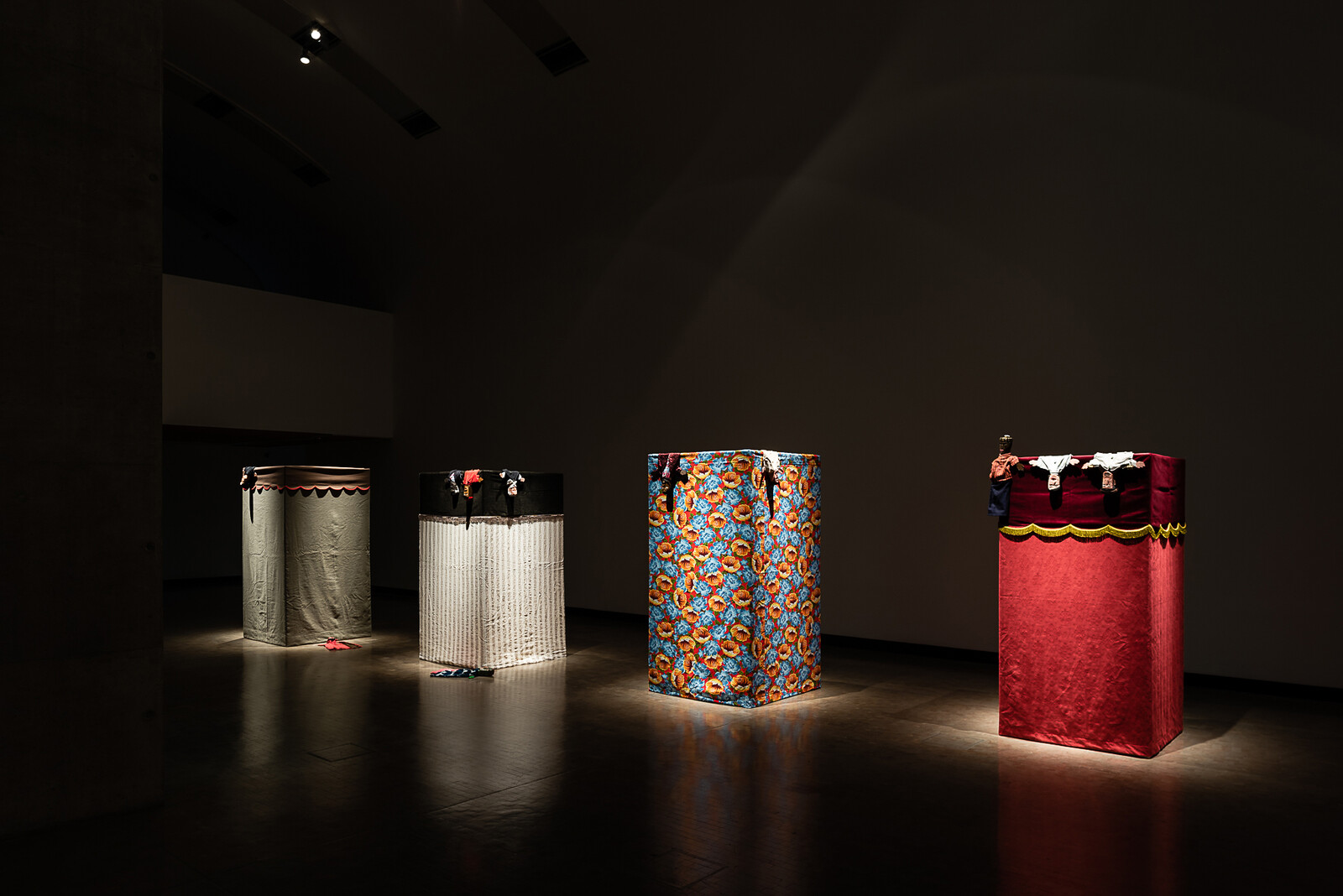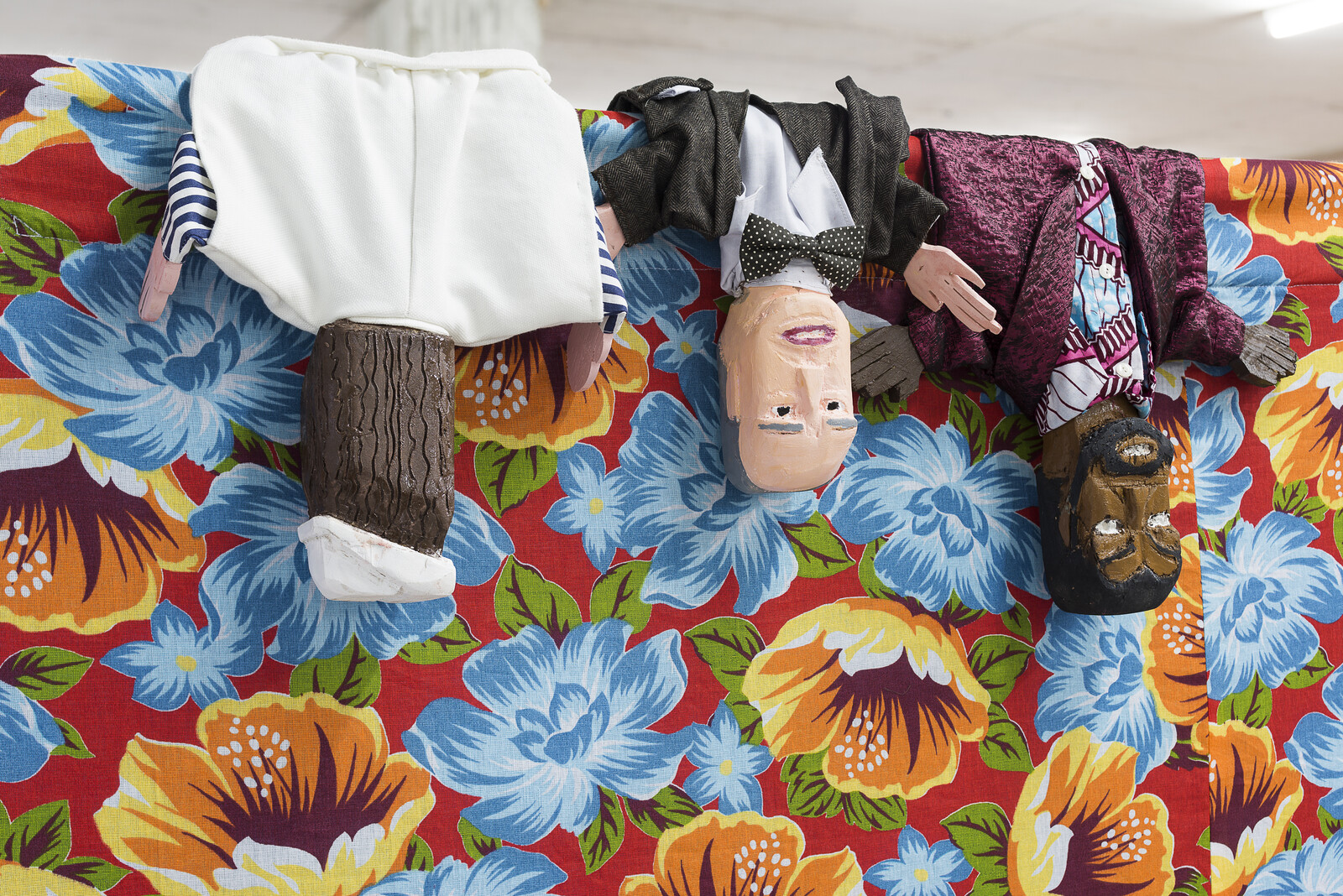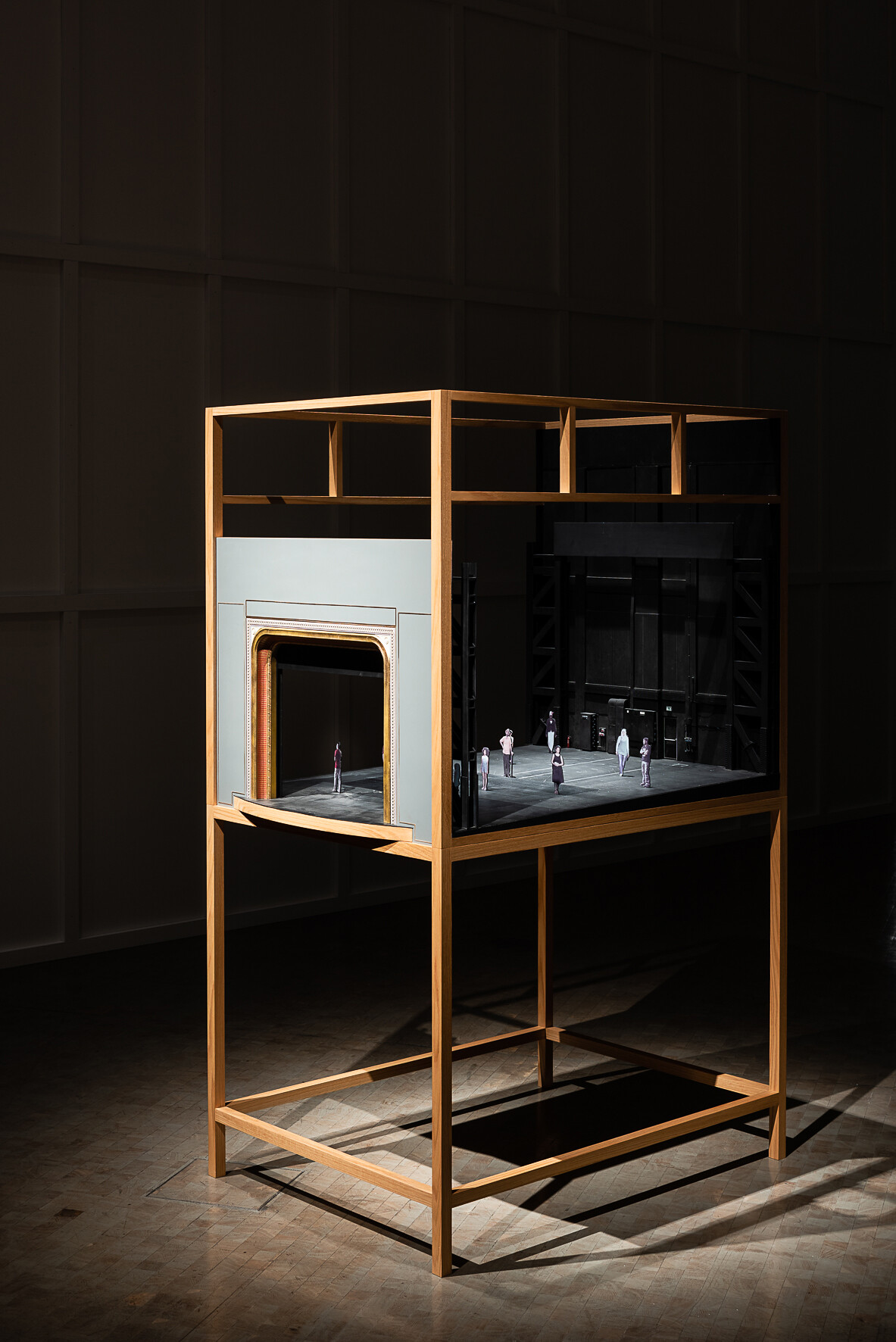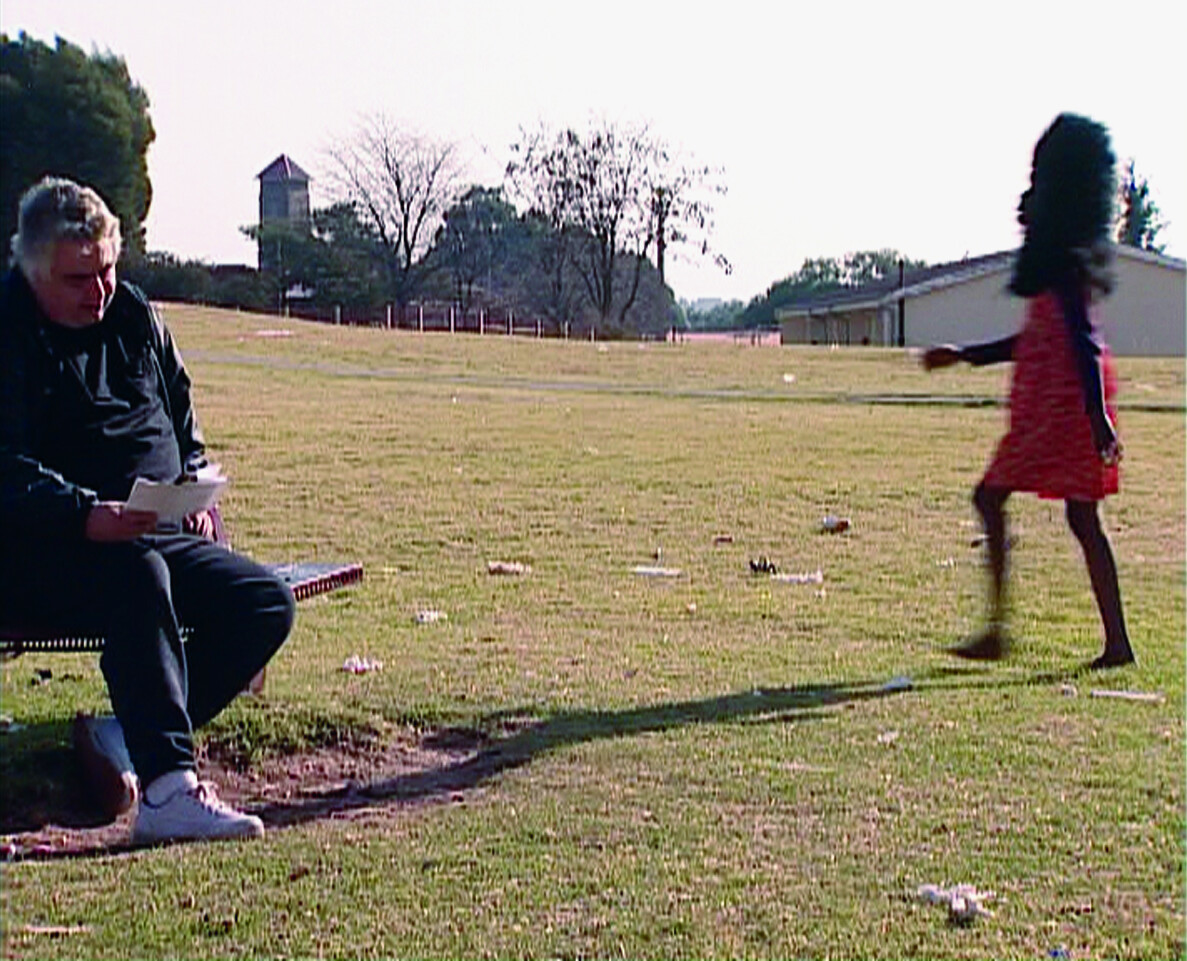Puppet theater is something you don’t see often in an art exhibition, and here the characters are four historical figures who were important in times of transition in diverse ways: John Chavafambria, known as the “Black Hamlet” of psychoanalysis; Henry Ford, founder of Ford Motor Company; violinist Julia Schucht, the wife of Antonio Gramsci; and Toussaint Louverture, leader of the Haitian revolution of 1791–1804. Rooted in disparate places and times, the protagonists of Peter Friedl’s puppet show The Dramatist (Black Hamlet, Crazy Henry, Giulia, Toussaint) (2013) enact potential performances of counterfactual historical narratives. These productions do not follow such conventions as the description of a linear sequence of events, accepted historical research or its usual forms of representation—they remain in the realm of the possible. Concurrently denied, the puppets hanging there lifelessly await their use even though their strings are hung so high that playing them would be impossible.
Change of scene: the video installation Report (2016) stands at the center of “Teatro,” this remarkable, critical exhibition which dissects hegemonic forms of thought. The work, previously shown at Documenta 14 (2017), initially shows the stage of the National Theatre of Greece in Athens, empty, with no stage design and hardly any props. In this minimalist but semantically loaded setting, 25 actors who live but weren’t born in Greece recite passages from Franz Kafka’s “A Report to an Academy” (1917) in their native language or a language of their choice. Ostensibly, the story concerns the incarnation of the monkey Rotpeter, but subtly it’s a parable about assimilation. In this untheatrical production, Friedl lets his protagonists recite the text without any actorly gestures in an audition-like setting, one after another. At the end, selected passages from their performances are collected in a polyglot collage with no subtitles.
German, the language Kafka wrote in, is not spoken by the immigrants in Report—not least thanks to this conceptual omission, this multilingual work asks the same question that Gilles Deleuze and Félix Guattari advanced in their essay “Franz Kafka: Toward a Minor Literature” (1975), whether it is possible to phrase an “own” language within a dominant language in a manner that is not assimilated or even resistant. This issue is picked up in postcolonial theory, for instance by Gayatri Chakravorty Spivak, who in her text “Can the Subaltern Speak” (1985) explores the problem of who can speak about whom within a hegemonic context, and ultimately also who may write history. Matters of language politics like these are the leitmotif of Friedl’s exhibition and are examined aesthetically in a variety of works in different mediums, including the animal costumes called Peter Friedl (1998), the newspaper-photography archive Theory of Justice (1992–2010), the video King Kong (2001), and the architecture models of Rehousing (2012–19).
Like The Dramatist (Black Hamlet, Crazy Henry, Giulia, Toussaint), Rehousing arranges an unusual representation of an anti-hegemonic historical narrative. It presents a group of architecture models, but not of iconic buildings. Instead, there is a replica of Martin Heidegger’s wood cabin in the Black Forest, a model of Ho Chi Minh’s private residence in Hanoi, as well as a model of a shack built by refugees in a makeshift refugee camp in a park in Kreuzberg, Berlin. Targeted aberration and significant omissions again structure this work, on this occasion deviating from the agreed canon of what is historically relevant. All these buildings speak of political ideologies through their painstakingly reenacted architectures, coalescing into what Friedl has described as a “mental geography of an alternative modernity,” where disparate temporal and spatial positions collide.1
The exhibition’s architecture represents yet another deviation from conventions. The walls of the space are practically bare; instead, the works—except for the videos Liberty City (2007) and Study for Social Dreaming (2014–17)—are either hanging from the ceiling or standing on the floor. What’s more, the space is engulfed in a disorienting darkness, with spotlights directed at individual works. It’s a structure of refusal of conventions that underlines the claim to ideological critique that is inherent to Friedl’s aesthetics.
King Kong continues this structural critique, both formally and conceptually. An examination of the genre of music videos, which rose to prominence in the 1980s, in parallel with the rise of global neoliberalism, the video focuses on musician Daniel Johnston, sitting on a bench, reciting his 1983 song “King Kong.” Here, power is resolutely put into perspective: Johnston is something of an (underground) star, but he has also publicly addressed his mental illness, and does not perform a brand of “heroically powerful” white masculinity. The film character King Kong, who perishes as a tragic hero as a result of his monstrous size and therefore obvious otherness, exhibits a similar ambivalence. Johnston is filmed performing in a park in Johannesburg, in a district that until the 1950s was named Sophiatown, which was a center of black culture. Following the forced removals of the black population by the apartheid regime, the district was renamed Triomf—Afrikaans for “triumph”—and in 2006 was renamed Sophiatown again. Through Johnston, Friedl criticizes the concept of whiteness, specifically white men, as the figure that is presented in identity politics as well as parts of postcolonial theory as the carrier of capitalist-imperialist power. The argument, following the writing of Edward Said and Spivak, criticizes the binary opposition—white/nonwhite, man/woman—as essentialist and lacking in complexity. King Kong also alludes to the eponymous jazz opera from 1959 that sings of the tragic fate of the heavyweight boxer Ezekiel “King Kong” Dhlamini, who is presumed to have committed suicide in prison in 1957 after he was arrested for murder. In Friedl’s video, history proves itself to be a narrative sequence of defeats and losses.
Peter Friedl, “A Different Strain of Modern,” Domus no. 985 (November 2014): 35.
